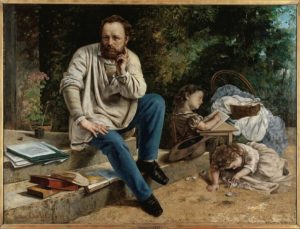 During the last hundred years, European painting has shifted dramatically. From a style that emphasized the physical appearance of a work, to one that emphasizes the mind. New technologies have changed the way images are reproduced and received. These changes have fundamentally changed the way that artists and art lovers understand images. If you’re looking for more tips, Painters Sarasota – Euro Painting, Inc. has it for you.
During the last hundred years, European painting has shifted dramatically. From a style that emphasized the physical appearance of a work, to one that emphasizes the mind. New technologies have changed the way images are reproduced and received. These changes have fundamentally changed the way that artists and art lovers understand images. If you’re looking for more tips, Painters Sarasota – Euro Painting, Inc. has it for you.
New European Painting is a term that describes contemporary painting in Europe. It reaches a critical point of distinction in the 1990s. During this time, the European artistic tradition began to be disrupted. Many artists started to produce works for themselves. In the beginning, these works were created with the intention of being purchased and displayed in art museums. However, the advent of transportation allowed for cross-border communication, which fuelled the spread of new ideas. These new ideas spread quickly throughout Europe, and this quickly transformed the practices of painting.
New European Painting is characterized by a collective history. It is also characterized by post-war trauma and a reliance on memory. It also involves new media and working with old and new materials. This movement is part of a post-World War II “archive” art trend.
The history of European painting is marked by an era of political, religious and cultural upheaval that swept across Europe from 1000 to 1800. From the Renaissance to the early twentieth century, European painting developed alongside ambitious architecture and the use of perspective. It was also influenced by the refinement of drawing and tapestry. Some of the most influential painters include Rembrandt, Michael Borremans, Jan Van Eyck, Jan Vermeer, and Vincent van Gogh.
In the mid-19th century, the history of European painting shifted away from abstract forms to representational modes of production. The advent of the printing press, the mass production of fabric, and television fueled a culture of images, and European painters began to study the impact of these new technologies on images. This accelerated the development of painting and sculpture throughout Europe. New media such as television and the World Wide Web have also played a role in collecting, distrusting, and preserving images.
New European Painting also influenced American Abstraction, as well as photography. It was also influenced by postmodern archive fever, a movement that emerged after World War II. Some artists from the first generation of New European Painting escape the label of Neo-Expressionist painting. Some of the most important representatives of the second generation include Peter Doig and Marlene Dumas.
The Belgian Pictor Doctus Luc Tuymans is an important figure within the tradition of New European Painting. Tuymans’ childhood was affected by World War II. He was influenced by the works of Early Netherlandish painter Jan Van Eyck. In addition, Tuymans is known for his interest in simulacra and new media.
Another major figure in New European Painting is Gerhard Richter. While Richter does not produce photorealistic paintings, he does reproduce photographs into works of art. He is the true predecessor of New European Painting, and his work has influenced a number of contemporary painters.